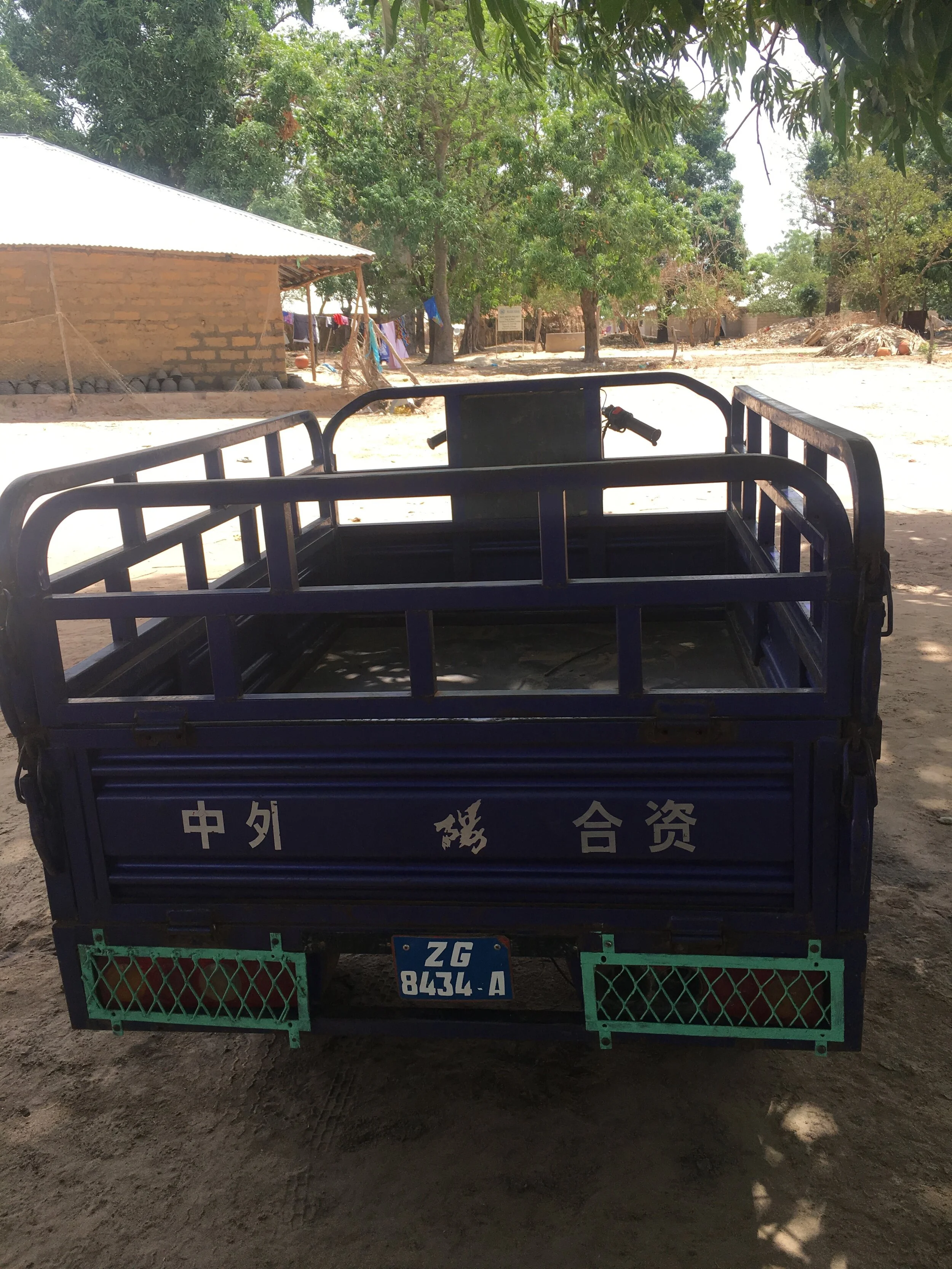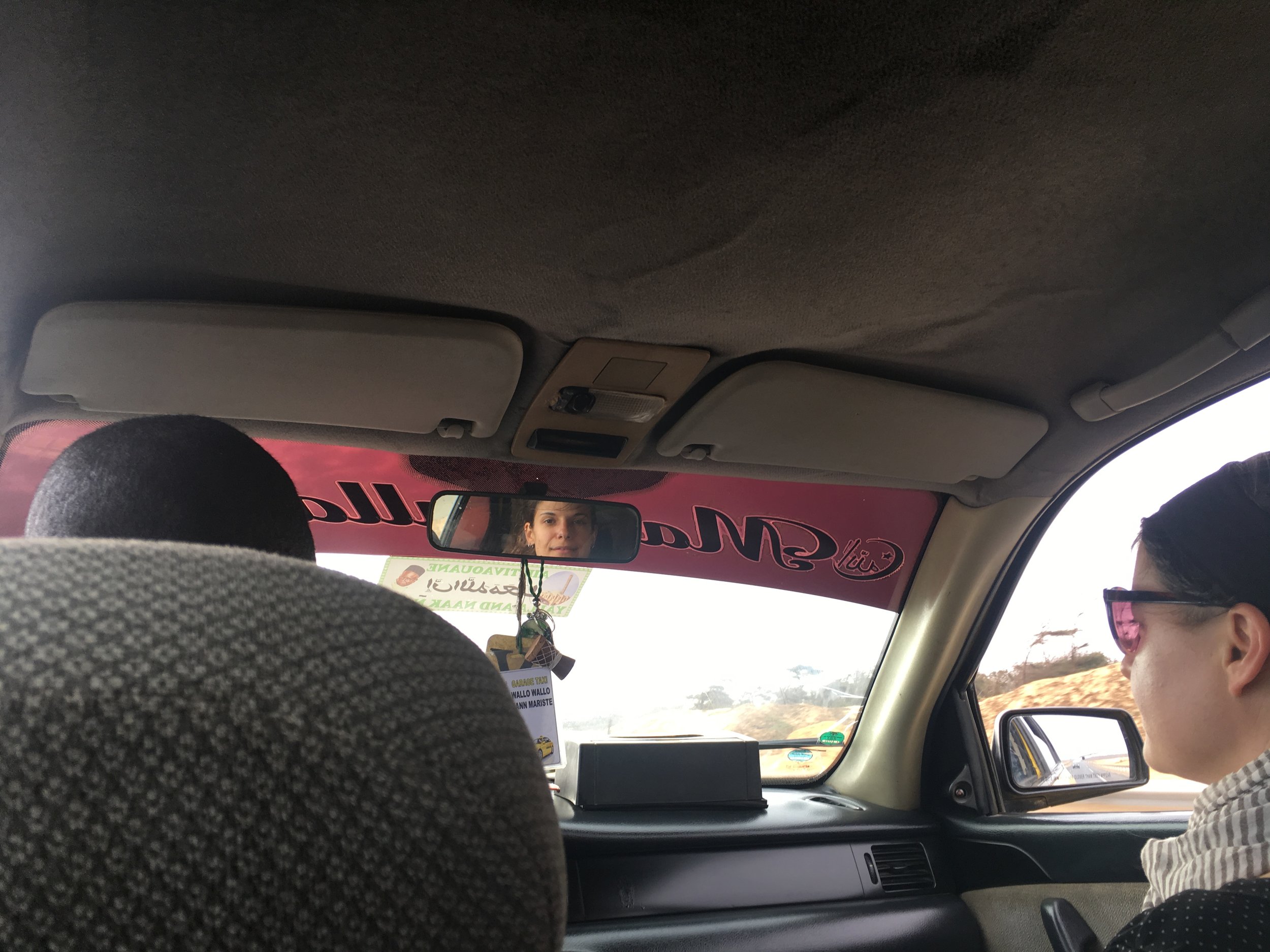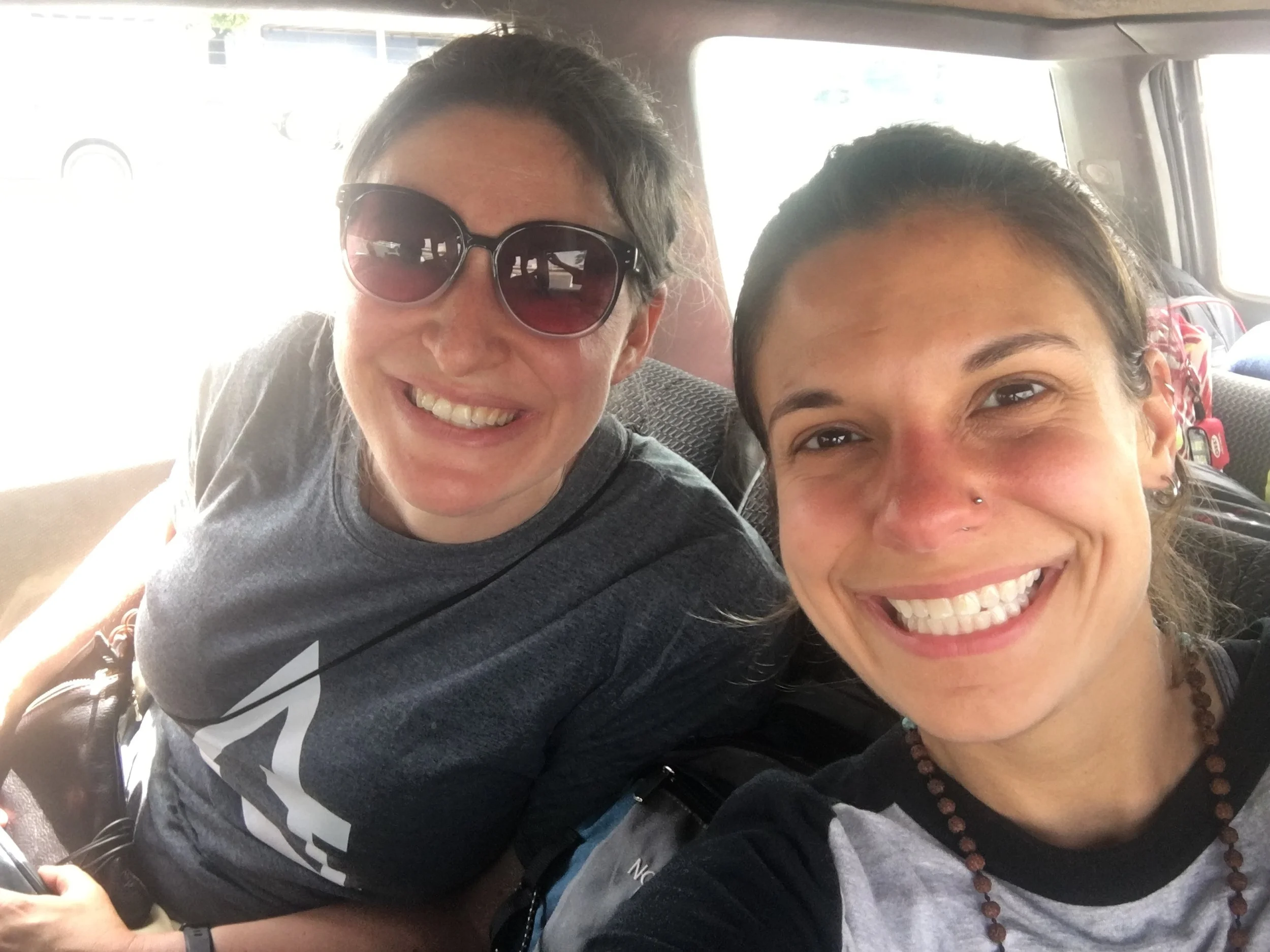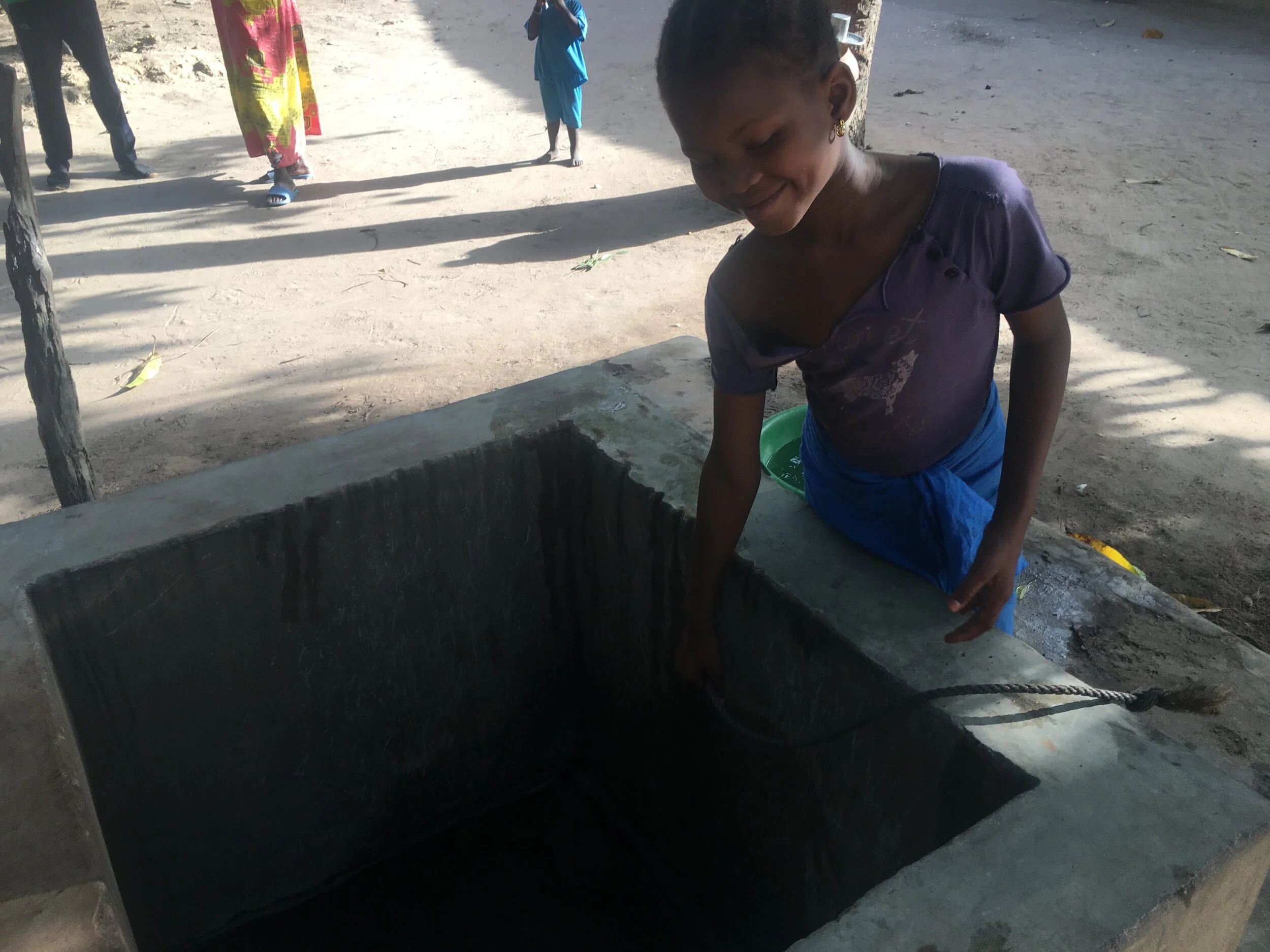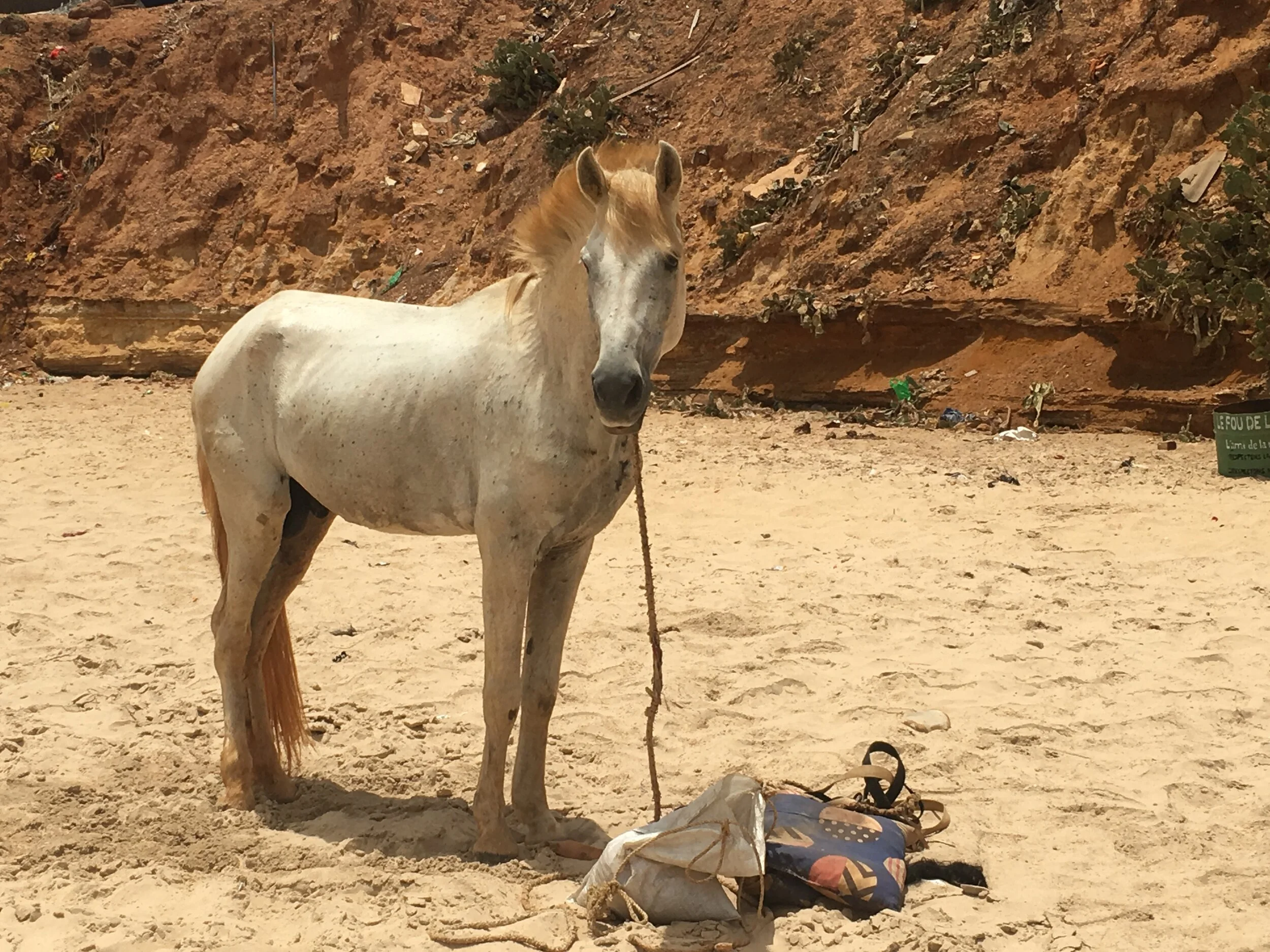Da Cars in Dakar
The single highway into Dakar is at a stand still. We are waiting in line for a toll booth and trying to make way for an ambulance with flashing lights flashing when I feel a slight thud from behind. Our driver, Dodo puts his truck in park, opens the door and bursts out without bothering to close it again. We have been rear-ended by the sedan behind us. Road traffic accidents are a leading cause of death in Senegal behind stroke, heart disease, flu, diarrhea, malaria and TB. Luckily, the truck was fine, Dodo got back in and we continued on our way.
Dodo’s car with Chris riding shotgun.
Big white block letters on a blue field signify a license plate for Senegal. Black is for The Gambia, White is Mauritania and Red is Mali. Since war broke out in the Ivory Coast in 2011, a lot of the shipping in east Africa has been re-routed to Dakar where trucks unload their goods onto boats at the port and reliably transport their merchandise. The huge trucks don’t help an already crowded motorway filled with Fords, Renaults, Mercedes and Kias.
I don’t see too many motorbikes in Dakar. Maybe it’s too dusty or they’re too expensive or too dangerous even for the locals’ tastes. What I do see everywhere is a mess of cars, driving on the right side of the road, or in the middle of the road or swerving from side to side to pass one another with mere inches to spare before the next car comes from the other directions. Some roads are paved but many are not. There’s a big unfinished bridge on the way north out of Dakar and it causes a traffic diversion through a village of bumpy dirt roads.
The open-top jeep we rode around Lake Retba.
People who don’t have cars often drive a two-wheeled cart pulled by small, skinny horses with short-cropped manes and blinders. The drivers are often unforgiving and wield a whip ad nauseam to increase their speed. The carts carry people, bales of hay, bricks, a refrigerator, or whatever else needs moved from one place to another. The horses, like many of the animals I’ve seen, aren’t always castrated and spend their non-working hours on the beach or in empty lots.
Chris video tapes the ride into Dakar until our driver tells him to stop. Not a minute later we’re at a roundabout manned by policemen, who do not take kindly to being recorded. The next day, our driver quickly urges Megan to put on her seat belt. She obliges just as we pass a police officer stopped at a street corner. The police are not well-paid in Senegal and corruption runs rampant. We are stopped by two police officers in yellow checkered vests and military-esque hats on our way back from Lake Retba. The driver again checks Megan’s seatbelt (she’s sitting shotgun) and manually rolls down his window to show his papers. I’ve yet to be in a car with automatic windows or air conditioning. Driving in Senegal has up to this point been a dusty, blustery affair.
Mor’s car with Megan riding shotgun.
Taxi drivers are required to pay for a special permit to allow them to drive tourists around in addition to having a valid driver’s license. Today’s driver is named Mor. He is quiet and his French is quite poor compared to many of the service industry workers we’ve encountered. He’s from Saint-Louis in the north and tells us it’s much more beautiful than Dakar with a wonderful bird sanctuary. He has bad body odor and says “oui” which sounds more like “oo-way” than “wee” to Megan, even when he doesn’t understand her questions.
He managed to tell us that there was a big accident nearby when we were touring the lake. Two mini-cars (large white vans used for public transportation) crashed into each other. Seven people are dead and everyone else is at the hospital. It is quite the tragedy. We tell him we agree it’s very sad. What we don’t tell him is how grateful we weren’t involved and how we would never want to drive ourselves around Senegal.
